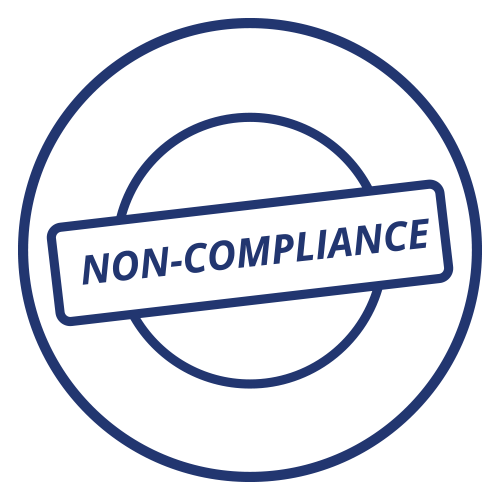
This is the first of a 3-part blog series, in which Nicola Els provides valuable insight into human-centered communication. In this first post, Nicola discusses 5 underlying causes of a fractured digital experience, the organizational symptoms and what customers are likely to experience as a result.
Companies send messages to customers every day. Typically, there’s a team of marketers who pay attention to brand voice and digital identity, who send nicely crafted, visually appealing emails, and well worded compliant, text messages.
Then there’s the customer service department who automated a bunch of triggered messages years ago, and have not reviewed the content or layout of those emails since.
If this sounds familiar, then the company you have in mind, is guilty of creating a fractured digital experience for customers. Some communications look and feel consistent with their experience of the brand, but others are simply unrecognizable.
As customers become increasingly aware of their experience with other brands, this kind of digital fracture is unsatisfactory.
But, what’s driving this fracture?
Here are 5 underlying causes of a fractured digital experience, the organizational symptoms and what customers are likely to experience as a result.

1. Redundant communication solutions
Company A has implemented point solutions from multiple digital communication vendors in different parts of the business
ORGANIZATIONAL SYMPTOMS
When you look under the hood, Company A suffers from a digital communication approach that is neither cohesive nor coordinated.
The symptoms include using systems with vastly different functionality; no sharing of customer preferences between departments; and no single view of all the communication the organization is sending to customers.
CUSTOMER SYMPTOMS
Company A’s customers receive well designed emails when the company wants to sell additional services; but text-heavy, unbranded emails from support and operations.
Sometimes they get multiple (uncoordinated) messages a day from different departments, and then nothing at all for weeks.
Company A’s customers find this fractured digital experience confusing.

2. Siloed digital communication strategies and misaligned initiatives
Company B’s complex organizational structure perpetuates siloes, with each business unit insisting on ownership of their customers and autonomy in their communication strategy.
ORGANIZATIONAL SYMPTOMS
Company B’s federated structure means there is no single view of an individual customer.
Business units operate independently, developing isolated strategies and implementing digital initiatives that are not aligned.
This causes duplication of systems and effort.
CUSTOMER SYMPTOMS
Customers receive communication from multiple business units within Company B, often with misaligned offers, mixed messages and clearly no coordination.
Company B’s customers do not care about internal structures and siloes.
They want to be seen holistically, as a single person with a portfolio of several products and / or services. This dissatisfaction means that they may look elsewhere for similar services.

3. Non-compliance and regulatory risk
The absence of a single view of customer means Company C runs the risk of non-compliance with data privacy legislation.
ORGANIZATIONAL SYMPTOMS
Data privacy legislation gives customers the right to control what is sent to them and to unsubscribe from consent-based communication at any time.
Company C doesn’t share unsubscribe information between departments or vendors, putting it at risk of violating consumer rights.
Manual processes and uncoordinated efforts mean no real view of risk, and constant concern over non-compliance.
CUSTOMER SYMPTOMS
Company C’s customers don’t understand the organization’s structures or politics and they don’t care either.
If a person unsubscribes on a marketing email from one department, he or she expects no further marketing from other departments.
If unable to unsubscribe, Company C’s customers may lodge a complaint with the relevant regulator.

4. Disjointed data
Company D has valuable information about customers, but it is stored all over the place, partly in legacy systems.
ORGANIZATIONAL SYMPTOMS
Company D has a long-running project aimed at achieving a single customer view across different information systems.
This project is way over the anticipated time and budget, with no end in sight.
Legacy applications and multiple vendors complicate this challenge.
CUSTOMER SYMPTOMS
Company D’s customers receive communication with very little personalization and marketing offers based on customer profiles, rather than individual circumstances.
Customers tend to ignore Company D’s emails because the content is not relevant to them.

5. Meaningless insights
Company E uses multiple communication platforms that all provide activity reports, but with different content and in different formats.
ORGANIZATIONAL SYMPTOMS
Company E’s multiple platform approach increases the workload on teams that have to review reports and manually consolidate the information into meaningful insights.
This chore tends to slip backwards on the priority list, leaving the business with very little insight into how their digital communication is performing.
Or worse, everyone works hard to get the insights, but ultimately it’s meaningless and arrives too late.
CUSTOMER SYMPTOMS
Customers have come to expect a certain level of intelligence in a company’s communication, based on their stated preferences, purchase behavior and how they interact with the business.
But Company E’s customers see none of this. If they purchase a toaster today, it’s very possible they will receive a special offer for the same item tomorrow.
Customers recognize this lack of intelligence and may consider moving across to a competitor that employs smart decisioning, resulting in highly relevant and personalized communication.
Recognize your business in this picture?
Talk to us about aligning all your customer communication to ensure a fracture free digital CX
In part 2 of this blog series, Nicola Els looks at 4 areas to focus on, when driving a human-centered communication approach.
















